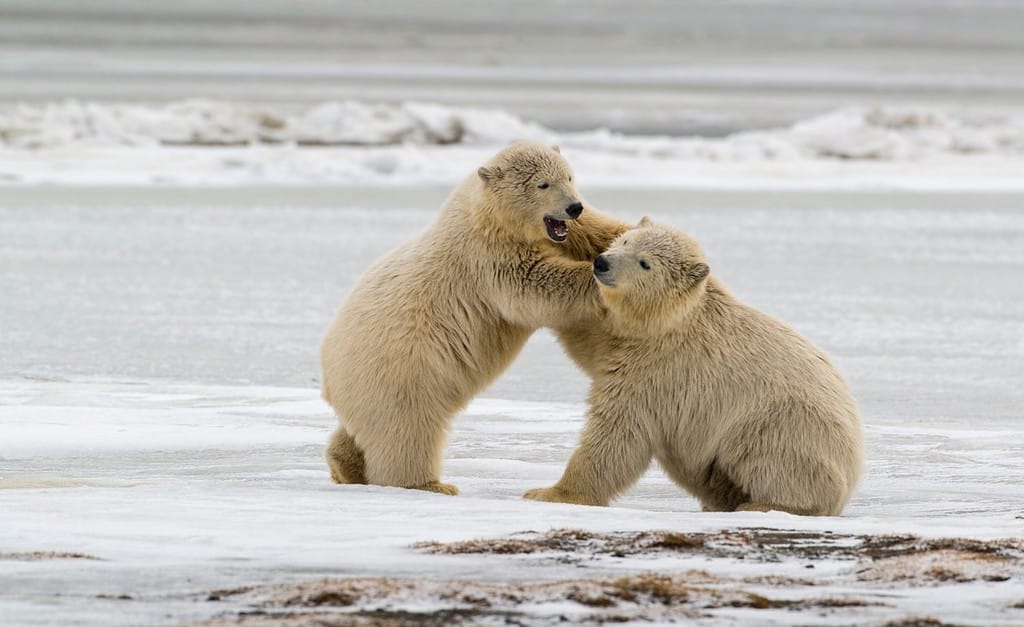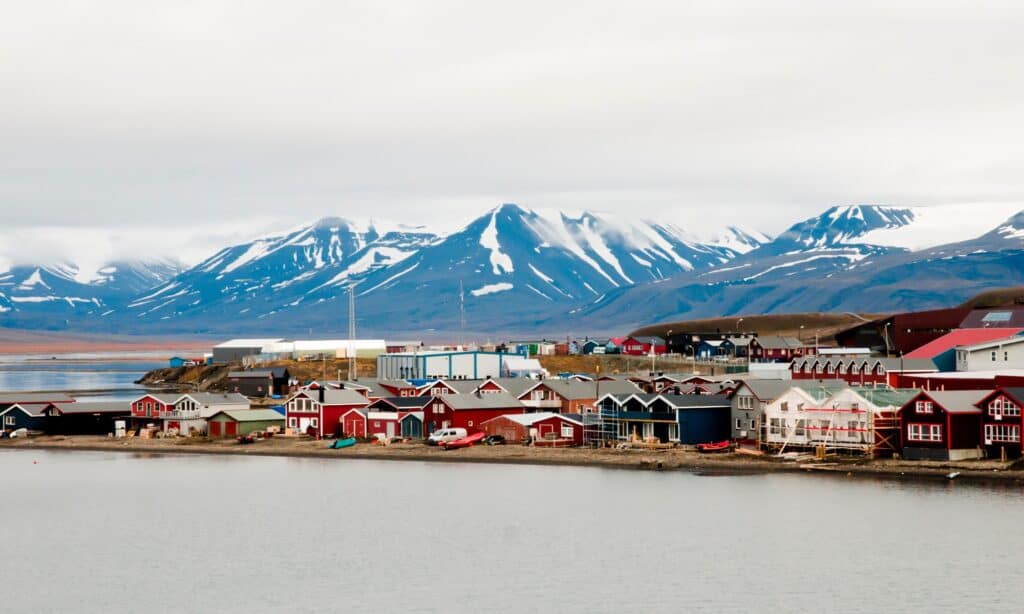Polar bears are the largest bears in the world, with some males weighing up to 1,700 pounds. They are easily identified by their distinctive white appearance and aquatic lifestyle. Polar bears inhabit the Arctic in a limited number of countries and rely heavily on the sea ice for hunting. However, they face a number of challenges, and there are now only around 26,000 polar bears left in the world. Keep reading to discover exactly where they live and how many inhabit the area!
1. Alaska

There are two populations of polar bears in Alaska.
©Danita Delimont/Shutterstock.com
One of the main populations of polar bears is in Alaska, with the state being home to between 4,000 and 7,000 individuals. There are two populations of polar bears in Alaska — the Chukchi Sea population and the Southern Beaufort Sea population. The Southern Beaufort Sea population inhabits the northern region of the state, and the Chukchi Sea population inhabits the western region. However, during the winter, the latter population can be observed as far south as St. Lawrence and St. Matthews Islands. Most polar bears in Alaska remain with the pack ice, even during the summer months, although some come ashore along the Beaufort Sea coast until the pack ice develops again in the fall.
The number of polar bears in Alaska declined significantly between the 1950s and 1970s, largely due to hunting, although there has been some recovery due to their status as an endangered species. The greatest threat to polar bears comes from climate change and the resulting loss of habitat, although other threats include pollution and human-bear conflict.
2. Canada

The town of Churchill is often called the “polar bear capital.”
©karenfoleyphotography/Shutterstock.com
The largest population of polar bears lives in Canada, with around 16,000 individuals. This is estimated to be around two-thirds of the entire population of polar bears in the world. There are thirteen smaller sub-populations of polar bears in Canada, the majority of which live in the Northwest and Nunavut territories. However, they can range as far south as the Gulf of St. Lawrence.
One of the best places to see polar bears in Canada is the town of Churchill, in Manitoba. The town is often called the “polar bear capital” due to the incredible phenomenon in the fall when up to 1,200 polar bears travel through the area on their way back to Hudson Bay when the ice begins to form on the water.
Steps have been taken to protect the polar bear’s habitat, and Canada has three marine protected areas and several national parks, which means that the polar bears within those ranges are safe from several of the threats that they face elsewhere.
3. Greenland

Polar bears in southeast Greenland have learned to adapt to the changing climate.
©Alexey_Seafarer/iStock via Getty Images
There are two main populations of polar bears in Greenland — one along the eastern coast and one along the western coast. There are approximately 2,200 polar bears in the western region, and the eastern population is estimated to be the same size, or possibly slightly larger. Polar bears in the western region are divided into three sub-populations — the Baffin Bay, Kane Bay, and Davis Strait populations.
However, some of the most fascinating polar bears in Greenland inhabit the southeastern corner of the country. The area only has sea ice between the months of February and May, but these polar bears have managed to survive in a warming climate by adapting to live and hunt on ice that has fallen from glaciers. Much of the area consists of fjords which the bears regularly cross while hunting, and the bears are managing surprisingly well.
4. Russia

Wrangel Island in Russia is an important breeding area for polar bears.
©evaurban/Shutterstock.com
There are four subpopulations of polar bears in Russia — Laptev Sea, Kara Sea, Barents Sea, and part of the Chukchi Sea population. One of the most important places for polar bears in Russia is Wrangel Island. Polar bears often congregate on the island in vast numbers, as they use the island as a safe place during the summer months when the sea ice has melted. However, it’s also the location of one of the largest numbers of polar bear dens in the world, making it a highly important breeding area. It’s also a highly important scientific area, with numerous international studies on polar bears conducted there.
5. Svalbard

Svalbard is home to approximately 300 polar bears all year round.
©iStock.com/Adrian Wojcik
The final place where polar bears live is Svalbard, which is an archipelago in the far north of Norway. Svalbard is located approximately halfway between the North Pole and the Norwegian mainland and consists of nine main islands and numerous smaller ones, spanning 24,209 square miles.
There are approximately 3,000 polar bears in and around Svalbard, with 300 of them inhabiting Spitsbergen, the area’s largest island. The polar bears in Norway are part of the Barents Sea population, which also inhabits Russia. However, Svalbard is considered to be one of the best places to see polar bears in the wild, given that around 300 of them live in the area all year round.
The photo featured at the top of this post is © Gecko1968/Shutterstock.com
Thank you for reading! Have some feedback for us? Contact the AZ Animals editorial team.






